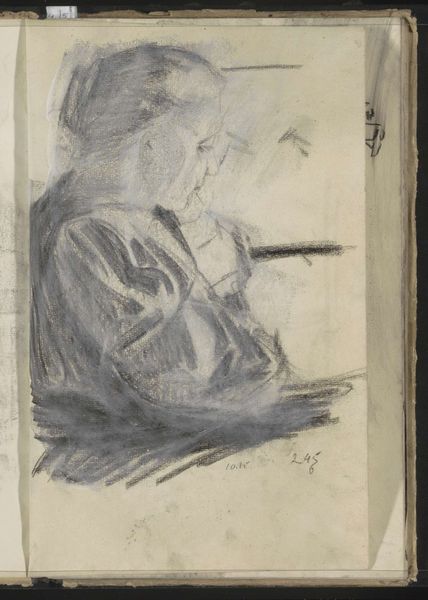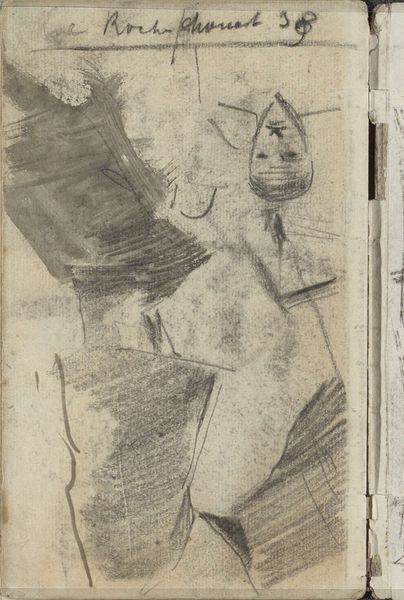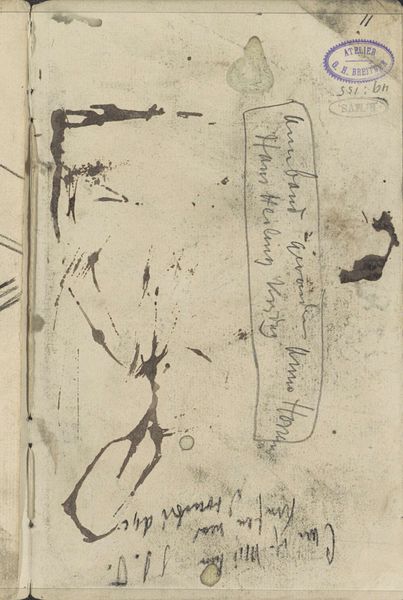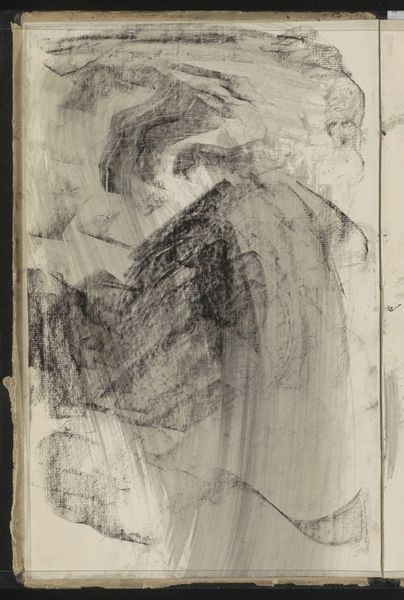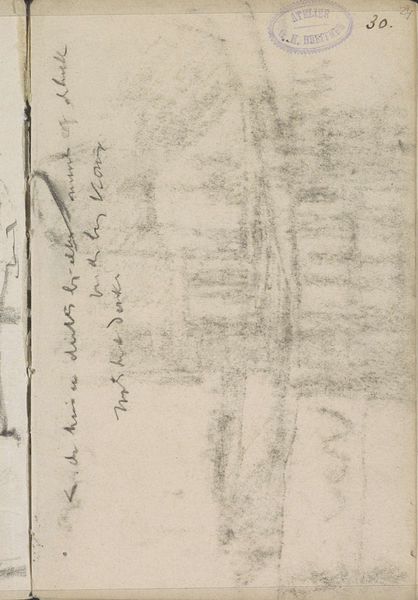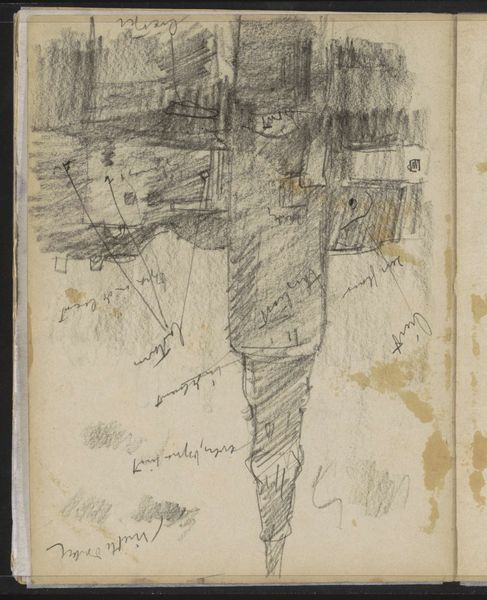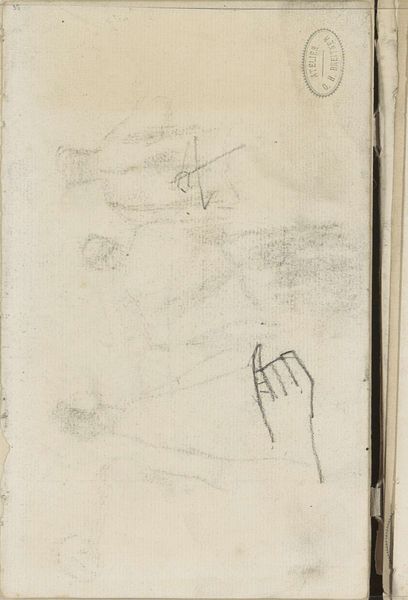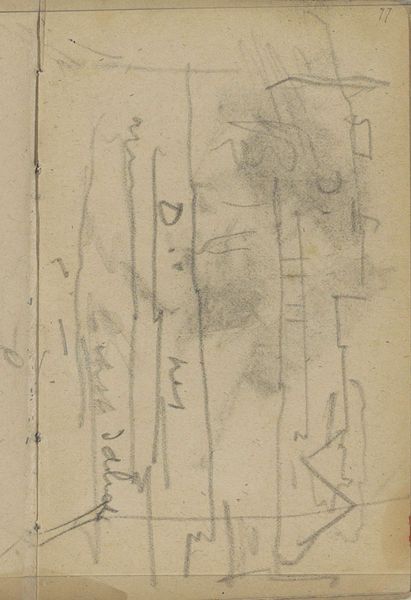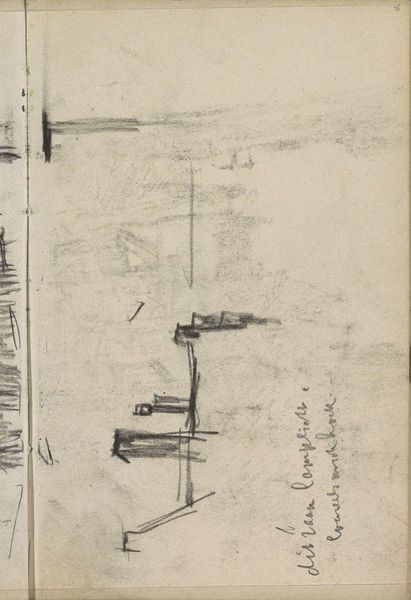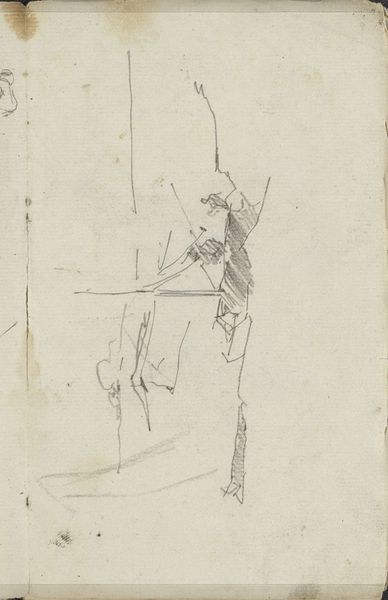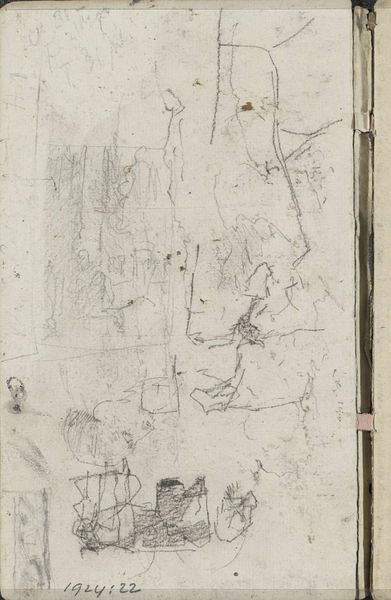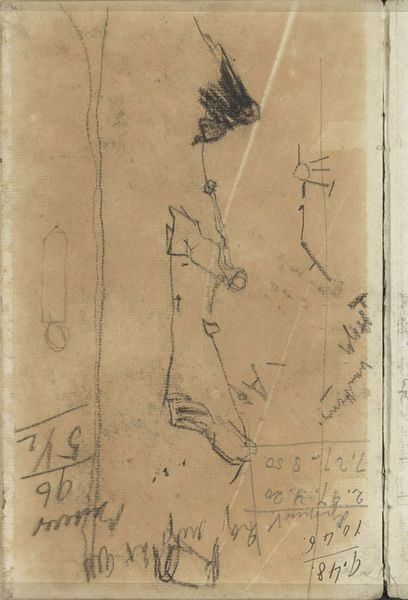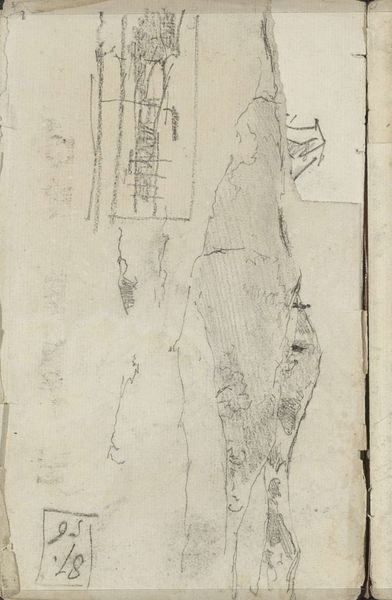
Copyright: Rijks Museum: Open Domain
Editor: This is "Stoel in een woonkamer," or "Chair in a Living Room," a drawing by Cornelis Vreedenburgh, dating sometime between 1890 and 1946. It’s pencil on paper. What strikes me most is the ambiguity, a sense of impermanence. What do you see in this piece, looking at it from an art perspective? Curator: Focusing on the formal elements, we observe a fragmented composition. The stark juxtaposition of loosely rendered objects and the overlaid grid immediately fractures any sense of conventional pictorial space. This pushes us to confront the very act of mark-making. Consider the tonal variations achieved through pencil: how do they delineate form while simultaneously dissolving it? Editor: It's interesting how you point out the fractured space. It almost feels like two separate drawings layered on top of each other. Do you think that layering was intentional, or perhaps just a result of the artist using the same page for multiple sketches? Curator: Intentionality, in this case, becomes a secondary consideration. What matters is the resultant visual dynamic. Note the stark linearity of the ruled lines contrasting with the gestural freedom of the chair and the surrounding scribbles. This interplay destabilizes any singular reading, suggesting perhaps a tension between structure and spontaneity, control and freedom. How might those binaries function, aesthetically? Editor: That's a perspective I hadn't considered, that regardless of the artist’s intention, we can still interpret the visual outcome. Thank you, I'm finding a lot to think about. Curator: Indeed. It is through such careful attention to form and structure that we approach a richer, more nuanced comprehension of the work's potential meanings.
Comments
No comments
Be the first to comment and join the conversation on the ultimate creative platform.
